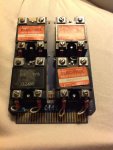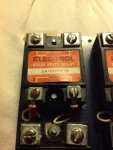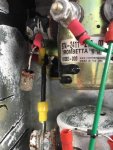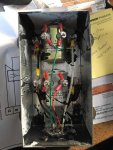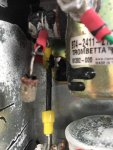- 232
- 126
- 43
- Location
- Abilene, Texas
Well, **** yes!
I think the NAPA solenoid was $40.
Shop supplies = $30.00
Four evenings of Bud Light = $60.00
Research & development = $100.00
Taking off & putting back 5+ times $100.00
Not knowing what the **** I'm doing = $100.00
Not paying attention to forum post instructions (lost time) =$100.00
Some Flex Seal = $10.00
Rust treatment w/Ospho = $10.00
Fabrication = $100.00
Up and down off the front tire ass rash = $50.00
Up and down again for dropping sockets = $50.00
Putting back for the last time & turning the switch = $50.00
Putting up the STE/ICE-R VTM, which I did use after the first hour of diagnosis = $50.00
I figure my time is worth $50.00 an hour.
I guess that's about it... $850.00 ...not including redo of battery cables and tie down brackets. Shoot that was another 8 hours of fabrication to make the old brackets except the new (2) large commercial batteries.
Batteries $160 each
8 hours fab & cable work over @$50.00 =$400.00
Bud Light = $20.00
Total $680.00 + $850.00 = $1620.00
Ah ****! I still beat the cost of that tow truck. Drank beer and got some new batteries too! Forgot about stopping by the landing strip.


I think the NAPA solenoid was $40.
Shop supplies = $30.00
Four evenings of Bud Light = $60.00
Research & development = $100.00
Taking off & putting back 5+ times $100.00
Not knowing what the **** I'm doing = $100.00
Not paying attention to forum post instructions (lost time) =$100.00
Some Flex Seal = $10.00
Rust treatment w/Ospho = $10.00
Fabrication = $100.00
Up and down off the front tire ass rash = $50.00
Up and down again for dropping sockets = $50.00
Putting back for the last time & turning the switch = $50.00
Putting up the STE/ICE-R VTM, which I did use after the first hour of diagnosis = $50.00
I figure my time is worth $50.00 an hour.
I guess that's about it... $850.00 ...not including redo of battery cables and tie down brackets. Shoot that was another 8 hours of fabrication to make the old brackets except the new (2) large commercial batteries.
Batteries $160 each
8 hours fab & cable work over @$50.00 =$400.00
Bud Light = $20.00
Total $680.00 + $850.00 = $1620.00
Ah ****! I still beat the cost of that tow truck. Drank beer and got some new batteries too! Forgot about stopping by the landing strip.






